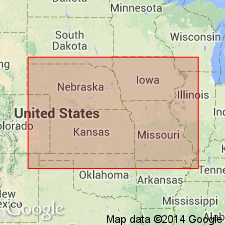
- Usage in publication:
-
- Burroak shale
- Modifications:
-
- Original reference
- Dominant lithology:
-
- Shale
- AAPG geologic province:
-
- Forest City basin
Summary:
Pg. 8, 14, 53-54, figs. 1, 2. Burroak shale is a new name herein suggested to replace "Mission Creek shale" of previous publications. "Mission Creek" should be abandoned because the exposures on Mission Creek in northeast Doniphan County, Kansas, correlate with Larsh shale of northern outcrops. In naming "Mission Creek shale" in 1927, Condra miscorrelated the Rock Bluff and Ozawkie of Iowa Point section with the Haynes and Rock Bluff, respectively, of Weeping Water Valley and Jones Point sections of Nebraska. The Burroak shale is very thin or absent near Big Springs, Kansas, southeast of Iowa Point, Nebraska, and at Forbes, Missouri. It is 1 to 2 feet thick north of Thurman, Iowa, and at Jones Point and near Weeping Water, Nebraska. It is thin or absent at Macedonia and northeast of Greenfield, Iowa. It consists of bluish-gray, argillaceous, fossiliferous shale, often containing a persistent carbonaceous streak near its top.
Type locality (p. 54): roadcuts and ravines near Burr Oak School, in E/2 sec. 21, T. 71 N., R. 43 W., Freemont Co., IA, about 6 mi south of Pacific Junction, IA, and about 3.5 mi north of Bartlett in Mills Co., southwestern IA.
Reference cited: Condra, G.E., 1927, "The stratigraphy of the Pennsylvanian System in Nebraska," Nebraska Geol. Survey Bull., no. 1, 291 p.
Source: US geologic names lexicon (USGS Bull. 896, p. 302-303).
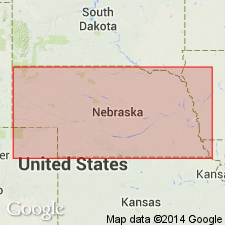
- Usage in publication:
-
- Burroak shale member
- Modifications:
-
- Revised
- Areal extent
- AAPG geologic province:
-
- Forest City basin
Summary:
Pg. 48. Burroak shale member of Deer Creek limestone underlies Ervine Creek limestone member and overlies Haynies limestone member. Burroak pinches out in southeastern Nebraska where Haynies limestone unites with the Ervine Creek.
Source: US geologic names lexicon (USGS Bull. 1200, p. 549).
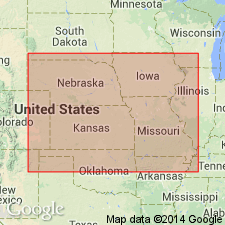
- Usage in publication:
-
- Burroak shale member*
- Modifications:
-
- Overview
- AAPG geologic province:
-
- Forest City basin
Summary:
Pg. 2035. Burroak shale member of Deer Creek formation. Overlies Haynies limestone member; underlies Larsh shale member. This is classification agreed upon by State Geological Surveys of Iowa, Kansas, Missouri, Nebraska, and Oklahoma, May 1947. Kansas uses [/]Larsh-Burroak shale member for interval.
[The use of a hyphen between undifferentiated [members] is not considered proper notation (CSN, 1933).]
Source: US geologic names lexicon (USGS Bull. 1200, p. 549).
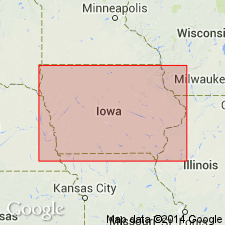
- Usage in publication:
-
- Burroak shale member
- Modifications:
-
- Areal extent
- AAPG geologic province:
-
- Forest City basin
Summary:
Pg. 17, fig. 5. Burroak shale not everywhere differentiated in southwestern Iowa because of absence in some areas of Haynies limestone, which results in the coalescing of Burroak and Larsh shales. Where Haynies is present, as near Thurman, Burroak shale is bluish-gray, argillaceous, and fossiliferous. Thickness about 1 foot near Thurman. Age is Late Pennsylvanian (Virgilian).
Source: US geologic names lexicon (USGS Bull. 1200, p. 549).
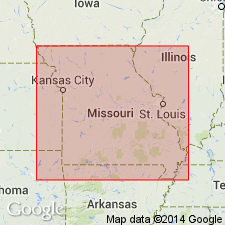
- Usage in publication:
-
- Burroak Shale Member
- Modifications:
-
- Overview
- AAPG geologic province:
-
- Forest City basin
Summary:
Pg. 46. Burroak Shale Member of Deer Creek Formation of Shawnee Group. The Haynies Limestone Member occurs in Iowa and Nebraska, and possibly in a few places in Kansas between the Larsh Shale Member below and the Burroak Shale Member (formerly Mission Creek) above. Condra (1927) indicated it also occurred in northern Kansas and northwestern Missouri, but was quite thin where found. If the Haynies limestone is not present, this interval is called the [/]Larsh-Burroak Shale Member. However, in Nebraska and Iowa, the three members are separately identified as the Larsh, Haynies and Burroak members of the Deer Creek Formation. Age is Pennsylvanian (Virgilian).
Reference cited: Condra, G.E., 1927, "The stratigraphy of the Pennsylvanian System in Nebraska," Nebraska Geol. Survey Bull., no. 1, 291 p.
[The use of a hyphen between undifferentiated [members] is not considered proper notation (CSN, 1933).]
Source: Publication.
For more information, please contact Nancy Stamm, Geologic Names Committee Secretary.
Asterisk (*) indicates published by U.S. Geological Survey authors.
"No current usage" (†) implies that a name has been abandoned or has fallen into disuse. Former usage and, if known, replacement name given in parentheses ( ).
Slash (/) indicates name conflicts with nomenclatural guidelines (CSN, 1933; ACSN, 1961, 1970; NACSN, 1983, 2005, 2021). May be explained within brackets ([ ]).

